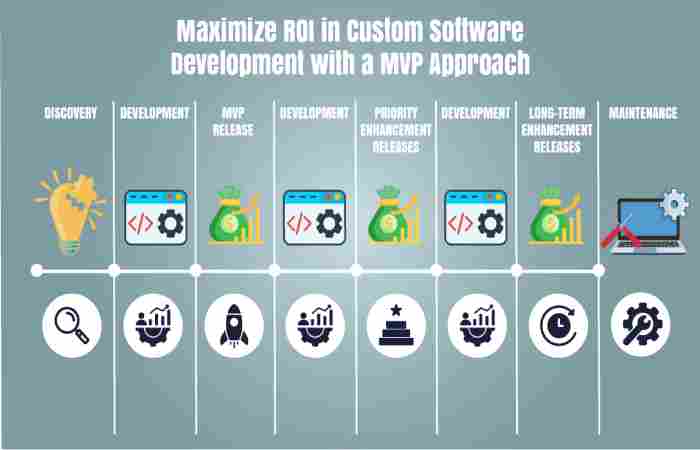Maximizing ROI: How to Strategically Plan Your Custom Trade

Every business dreams of getting the most out of every dollar invested — and that’s exactly what maximizing ROI (Return on Investment) is all about. When it comes to custom trade planning, your goal shouldn’t just be to participate but to strategically plan every move to ensure consistent growth, visibility, and profitability.
In this article, I’ll walk you through how to strategically plan your custom trade so you can achieve the best possible ROI — even in a competitive and ever-changing market.
What Does “Custom Trade” Really Mean?
Before we dive into the strategy, let’s clarify what we mean by “custom trade.”
A custom trade typically refers to a personalized or tailored business approach — like trade shows, B2B deals, or promotional events — that’s designed around your brand’s unique strengths, target audience, and objectives.
It’s not a one-size-fits-all process. Instead, it’s about creating customized marketing and trade strategies that perfectly align with your brand’s goals and customer expectations.
The real question is — how do you plan it effectively to maximize ROI?
Step 1: Define Clear and Measurable Goals
Know What You Want to Achieve
You can’t measure success if you don’t know what success looks like. Start by identifying specific, measurable, achievable, relevant, and time-bound (SMART) goals.
Ask yourself:
-
Are you looking to generate leads or increase brand awareness?
-
Do you want to launch a product or strengthen industry relationships?
-
How will you measure ROI — through sales, conversions, or engagement?
Having clear answers to these questions will help you make better strategic decisions throughout the planning process.
Example:
If your goal is to boost sales by 25% in three months, then your trade strategy must include high-intent outreach campaigns and follow-up systems designed to close deals — not just collect business cards.
Step 2: Know Your Target Audience Inside Out
Understand Their Needs, Not Just Their Names
The success of your custom trade depends on how well you understand your audience. This isn’t just about age or demographics — it’s about their behaviors, pain points, and buying motivations.
Do some research to find out:
-
What challenges are they facing in your industry?
-
What products or services are they currently using?
-
What makes them switch from one brand to another?
Once you have these insights, tailor your trade show booth, marketing materials, and offers to speak directly to their needs.
Step 3: Choose the Right Trade Opportunities
Not Every Event Is Worth Your Time
One of the most common mistakes businesses make is trying to attend every trade show or industry event. Instead, focus on quality over quantity.
When evaluating opportunities, consider:
-
Relevance: Does the event align with your target audience and niche?
-
Cost vs. Return: Will the leads generated justify the investment?
-
Timing: Does it fit your product launch or marketing calendar?
The right trade show or event can bring massive exposure and sales — but the wrong one can waste your time and resources.
Step 4: Create a Strategic Budget Plan
Every Dollar Must Have a Purpose
Your budget isn’t just a number — it’s a strategy. A clear financial plan helps prevent overspending and ensures that every investment brings measurable returns.
Break down your budget into key categories:
-
Booth design and setup
-
Marketing materials (banners, brochures, giveaways)
-
Digital campaigns (email, social media ads)
-
Travel, accommodation, and logistics
-
Lead management tools
Step 5: Build a Strong Pre-Event Marketing Plan
Create Buzz Before You Show Up
If you wait until the day of the event to promote your trade participation, you’re already late. Start your marketing campaign weeks in advance to build anticipation and attract the right crowd.
Your pre-event strategy can include:
-
Announcing your participation on LinkedIn, Instagram, and email newsletters.
-
Running a teaser campaign showcasing your products or new releases.
-
Scheduling appointments in advance with key clients and partners.
-
Offering exclusive perks (like free demos or discounts) for early sign-ups.
The more people know about your brand before the event, the higher your booth traffic and engagement will be.
Step 6: Optimize Your Booth and Presentation
First Impressions Are Everything
Your booth or trade setup is the physical reflection of your brand. Make it visually appealing, interactive, and inviting.
Here’s how to stand out:
-
Use eye-catching designs with your brand colors and logo.
-
Display product demos or live experiences.
-
Have knowledgeable, friendly staff ready to engage with visitors.
-
Offer free samples, games, or contests to draw attention.
Step 7: Use Technology to Your Advantage
Automate and Analyze Everything
Technology plays a key role in maximizing ROI. Use tools that help you track performance, capture data, and automate follow-ups.
Some useful tools include:
-
CRM systems like HubSpot or Zoho to manage leads.
-
Email automation platforms like Mailchimp for post-event communication.
-
Analytics tools to measure engagement and conversions.
-
AR/VR elements for immersive booth experiences.
This not only improves efficiency but also gives you valuable insights into what’s working — and what needs improvement.
Step 8: Measure ROI Effectively
Numbers Tell the Real Story
ROI measurement isn’t just about sales. It’s about understanding the total impact of your trade strategy.
Track key metrics such as:
-
Total leads captured
-
Conversion rate (leads turned into sales)
-
Cost per lead
-
Social media reach and engagement
-
Customer feedback and satisfaction
By comparing results against your original goals, you can identify what delivered the most value — and where to improve next time.
Step 9: Post-Event Follow-Up — Where Real ROI Happens
Don’t Let Your Leads Go Cold
Most companies make the mistake of slowing down after the event — but this is when real ROI is made. Your post-event plan should include:
-
Sending personalized thank-you emails within 48 hours.
-
Sharing recaps or highlights on social media.
-
Scheduling follow-up meetings or demos with qualified leads.
-
Adding leads into your CRM for long-term nurturing.
Stay connected with your new contacts through valuable updates, newsletters, or exclusive offers. Remember — consistent communication builds trust.
Step 10: Learn and Refine
Every Trade Experience Is a Lesson
No matter how successful your trade strategy is, there’s always room for improvement. After every event or campaign, conduct a post-analysis session with your team.
Discuss questions like:
-
What worked well and what didn’t?
-
Which channels brought the most engagement?
-
How did the audience respond to your presentation?
-
What can be improved next time?
These insights will help you build smarter and more profitable trade strategies in the future.
The Future of Custom Trade Planning
As technology and consumer behaviors evolve, custom trade strategies are becoming more data-driven, digital, and hybrid. Businesses are blending virtual trade events with physical ones, using AI-powered insights to understand buyers better.
Emerging trends include:
-
Virtual trade shows and online expos
-
Sustainability-focused setups
-
Personalized product demonstrations using AI
-
Real-time analytics for on-site decision-making
The key takeaway? Stay agile. Businesses that adapt quickly are the ones that achieve higher ROI in the long run.
Conclusion: Maximizing ROI Through Strategic Custom Trade Planning
When done right, strategic custom trade planning can be one of the most powerful tools to grow your business and maximize returns. It’s not about spending more — it’s about planning smarter, leveraging data, and staying connected with your audience.
So, if you’re looking to take your next trade strategy to the next level, start by defining your goals, understanding your audience, and using the right tools to track and optimize performance.
That’s the secret behind maximizing ROI: how to strategically plan your custom trade — making every move count and every dollar invested truly worthwhile.

